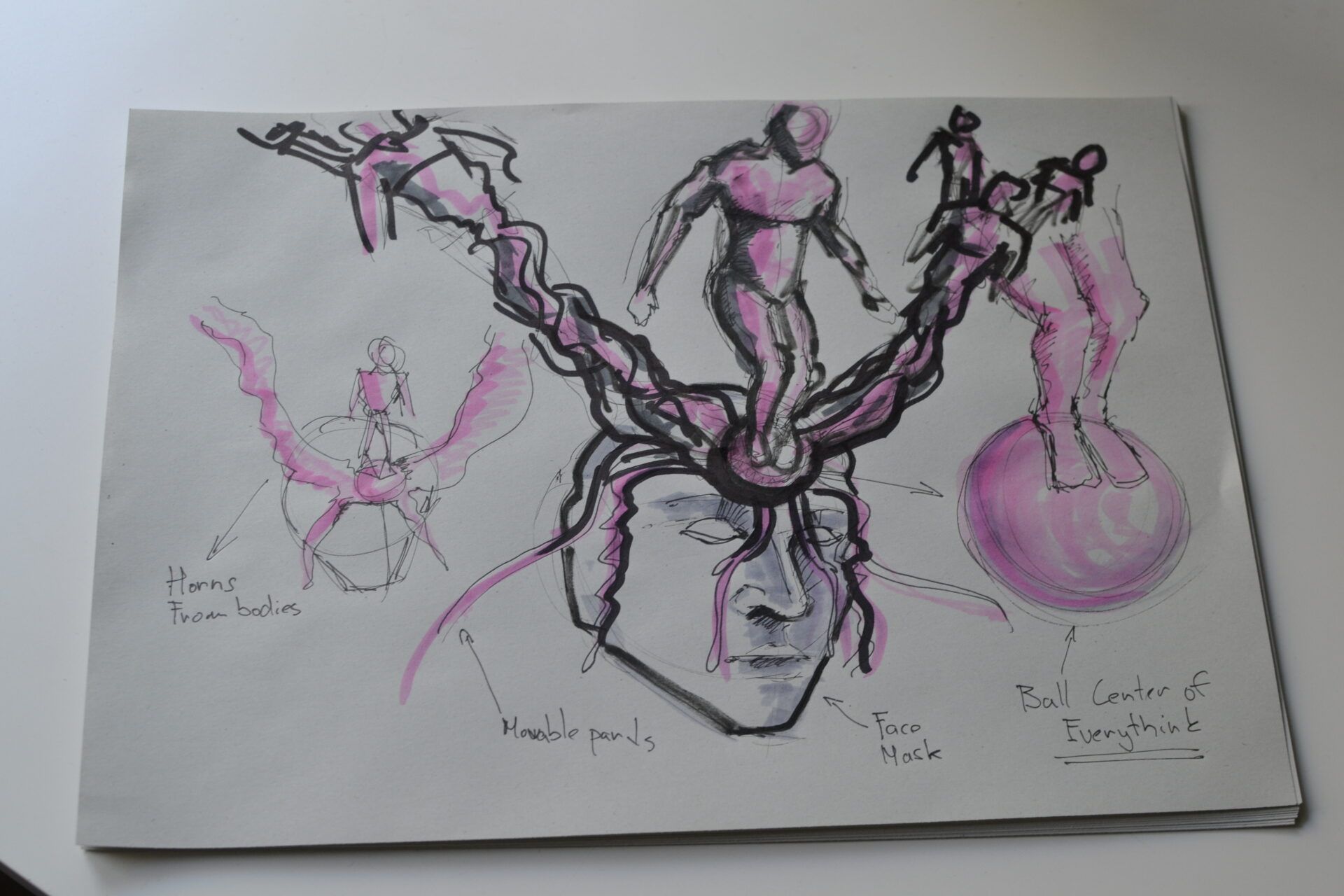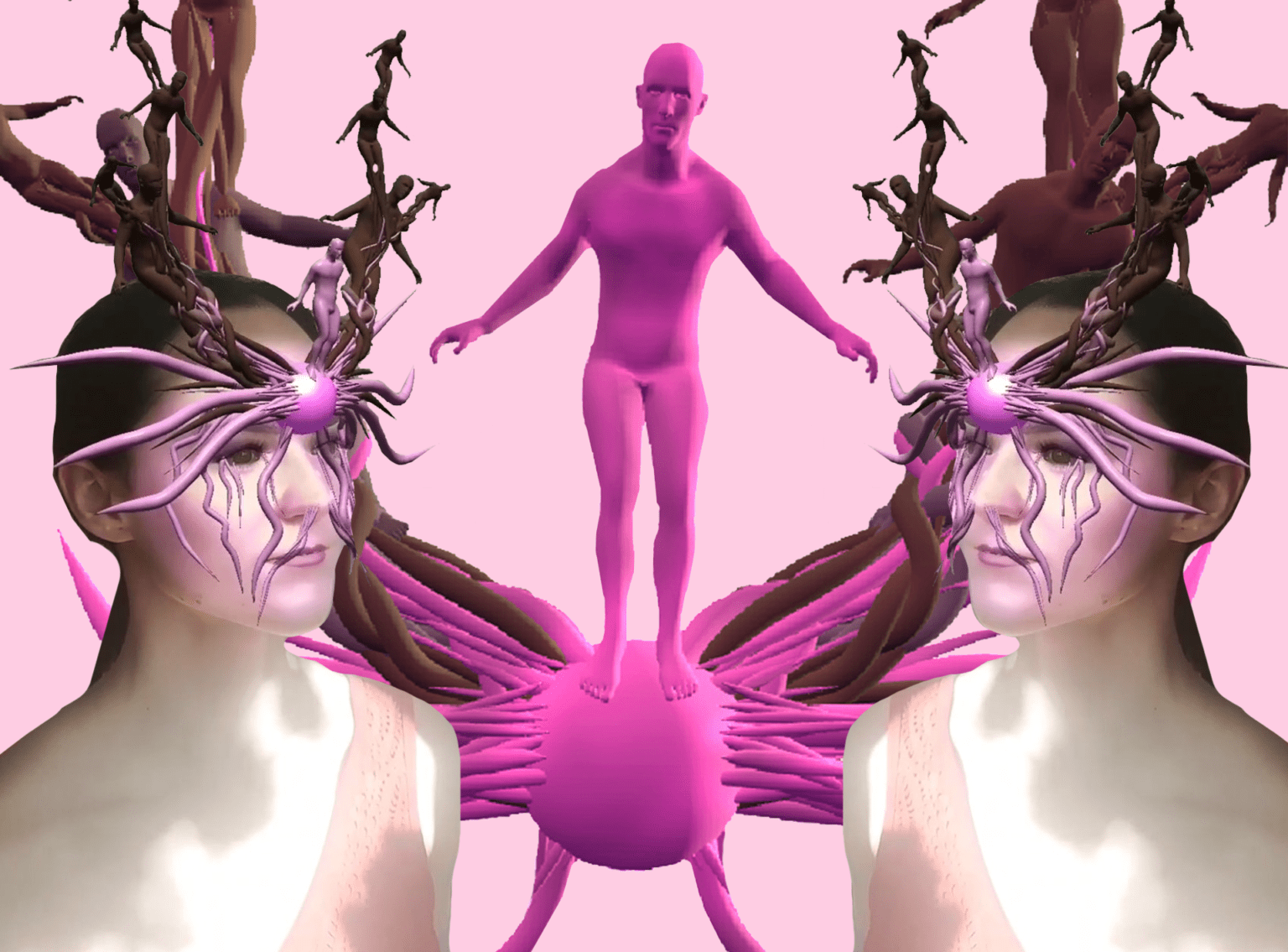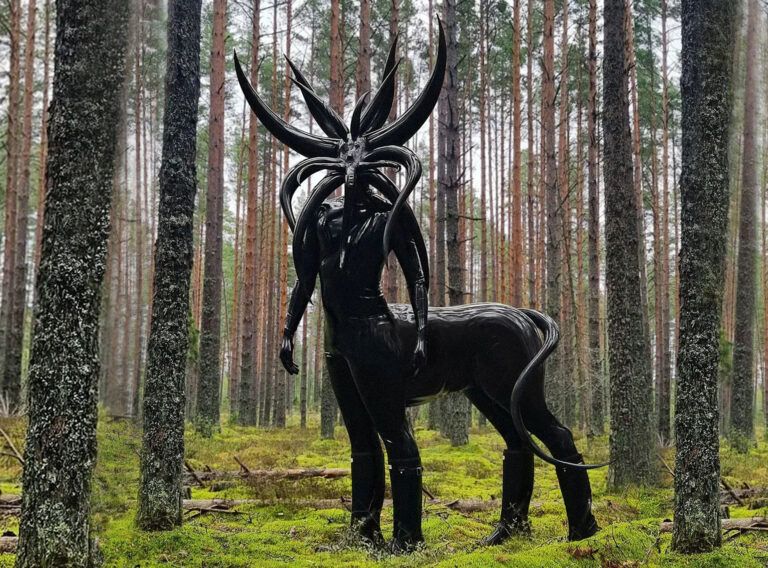Could you briefly introduce us to your Digital VR AR Lab project that not only focuses on creating virtual reality but also on designing face filters?
Through my Instagram profile, I create digital content of all kinds. I do mobile apps, 3D tours and projects in virtual reality, 360° scenes, AR, Instagram and Snapchat filters. I don’t make an effort to specialize or to necessarily specify my work in one direction, I like to utilize a wide range of softwares in order to achieve the desired outcome. I create and share commercial projects for various brands and companies (Finep, Greenpeace) where I showcase the practical application of digital technologies and virtual and augmented reality. I also often share original and independent projects where I, more or less, try to show the ways we will interact with digital content in the near future. To some extent, it’s also meant to be an experiment and inspiration for other creatives. I try to integrate various contemporary technologies and disrupt the stereotypes concerning digital creation. That also includes face filters because it’s the most common and oftentimes first encounter of the general population with augmented reality. That’s why I want to be there for it and, if possible, to define the field to some extent.
FACE FILTER – IN USE
FACE FILTER – MAKING OF
Currently, the theme we have underway is titled HEAVENLY BODIES. What comes to mind when you see these words and how does it reflect in the face filter that you’ve created for us?
Most of my works are anthropocentric, all of my projects deal with interaction of humans and their surroundings, be it physical or digital. This connection was most apparent in my sexbot project where I reacted to self-pleasuring through getting a like. To me, a human being is at the core of my works and perception of the digital. I reflected this also in the face filter I made for you where there’s an unshapely figure balancing on a pulsating ball of energy in the centre. The user puts the individual energy beams in motion through head movements and co-creates the final impression. The filter visual is basically built from intertwined human bodies that create the mask – the body is, therefore, the building block of the whole filter.

Do you think that using both face and photo filters has changed our perception of ourselves and our surroundings?
The same as subsequent editing of photos in Photoshop has certainly influenced how we perceive the world, the usage of filters today has become a routine matter for many users. I won’t go into whether the impact is positive or negative, I don’t have the knowledge needed. These filters have helped many with self-presentation and stepping out of their comfort zone but this fake perception of perfection could have also given many people complexes. Beauty filters mostly aren’t on my work schedule but it’s nevertheless interesting to ponder why are filters that alternate our looks becoming so popular. Currently, Corona has sped up the process by home offices and endless video calls. Many got used to communicating via video and using various blurred backgrounds, etc., which are filters in their essence. I absolutely get not wanting to put on makeup for one call after spending the day in sweatpants. I think that streaming and video chat platforms will start to implement these filters if they haven’t already. According to me, it’s a gradual transformation of the world into a digital form and making oneself into an avatar. It’s going to take a long time before AI will be able to produce a lifelike face, which makes space for a different depiction of a person – the aforementioned avatar. Even your SWARM Instagram profile is an avatar of a kind. I perceive AR filters just as digital accessories to your real avatar. Just as you can now buy extra features for your character in video games, you will be able to buy these digital accessories for yourself for real money. Just wait and see.
Design- and visual-wise, what types of projects do you like the most?
I like creating AR projects the most. It’s, at its core, connecting the digital world with reality. I say quite often that I was born in an ideal period. I’ve spent childhood the “classic” way, without a mobile phone or internet, going house to house, ringing the doorbell so my friends could come out and play. Therefore, I’ve experienced the rise of the internet and smartphones at the perfect time, somewhere between childhood and adulthood, so I could learn how to work with them and accept the world of ones and noughts as my own. Thanks to this, I’m able to grasp what confuses the older generation about the online age, crypto art or skin buying for unreal amounts and, at the same time, I can see why are all these so close to the younger one. I strongly perceive this bridge between two generations and often project it into my works, and I’m truly glad for it. Nevertheless, my most favourite part of the creation process is the initial one – the ideation and how will a person interact with the digital concept. Choosing the best output. Brainstorming. I really like when companies and customers hire me to help them to create a “digital” project and invent the suitable output. The possibility to influence the project and push it forward is, to me, one of the greatest assets of being a freelancer. I try to be honest many times, which can change the customer’s overall idea and offer a much more suitable solution. I certainly wouldn’t dare to dish out such a “cruel diss” as an employee, I would probably do what I was asked instead. That’s why I enjoy the initial, searching phase with a client the most. Which is, of course, even more fun with my own projects.

How does it feel to spend some time in a “different” world/environment where strange physical and mechanical rules apply?
When you model, work or even game on a computer, eventually, you too submerge into the world behind the screen. This is pretty similar to what I do, only more intensive. I’ve encountered VR and AR more than five years ago and since then, I’ve been regularly incorporating them into my working process, so I don’t find it strange, on the contrary, it’s a common thing for me.
Is there something fresh you’re working on at the moment that we can look forward to? Any plans for the future?
I have plenty of ideas, most of them revolve around augmented reality and the combination of digital content with the real world, and how to integrate digitization into day-to-day life more. Currently, I’m working on multiple projects with several artists where we, e.g., combine digital aspects with applied and fine art. I also work for larger companies. Nevertheless, in most cases, the projects and concepts are very entertaining and fulfilling, so I don’t get stuck in creative stereotypes. At UMPRUM (Academy of Arts, Architecture and Design in Prague), I graduated from the Industrial Design studio and I’m sure I wouldn’t be able to be so creative in this field and, paradoxically, I now have even more creative and authorial freedom.
BIO / Michael Rosa is a graduate of the Academy of Arts, Architecture and Design in Prague and a fresh blood in the art and design world. A technology enthusiast who balances between industrial and digital design, he combines his design approach and thinking with new technologies often using Virtual and Augmented reality, 3D printing and 3D scans, allowing him to create completely new solutions, products and often non-existent media. Michael does not end with products, he creates mobile applications, games, social interactions. However, it is always about the same thing for him, to cover the topic as best he can and to choose a suitable presentation medium. In all his works he looks for a deeper principle, an overlap within the given frameworks. Behind his work is a long process of research, often in reaction to today’s times, technological progress and current situations in society.
CREDITS
Artworks and Face Filter / Michael Rosa @rosamichael.digital
https://rosamichael.com/
.
Interview / Markéta Kosinová
Translation / Františka Blažková




